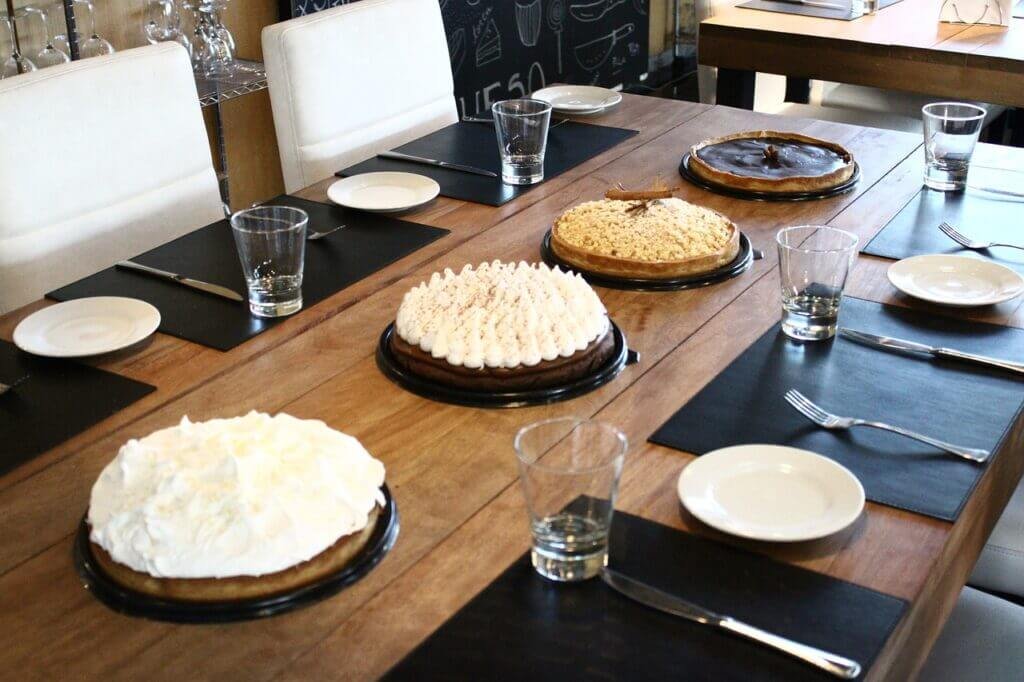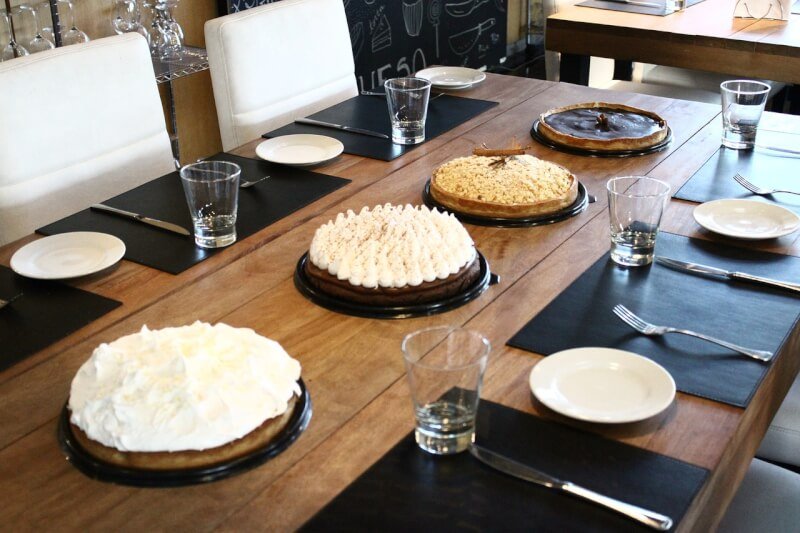Whether you are a seasoned baker or just starting out in the world of baking, understanding the different types of pastry dough is crucial for creating delicious and successful treats. From flaky to shortcrust, buttery to puff, each type of dough offers its own unique texture and flavor to elevate your desserts to the next level. In this article, we will explore the various types of pastry dough, their characteristics, and when to use them in your baking adventures. So grab your apron and rolling pin, and let’s dive into the wonderful world of pastry dough!

Shortcrust Pastry Dough
Description and Characteristics
Shortcrust pastry dough is a versatile and popular type of pastry dough that is commonly used for both sweet and savory dishes. It is known for its crumbly texture and buttery flavor. Shortcrust pastry dough is relatively easy to work with and is ideal for creating pie crusts, tarts, quiches, and other baked goods that require a sturdy base.
Ingredients
The ingredients for shortcrust pastry dough are simple and can usually be found in most kitchens. They typically include flour, butter, salt, and cold water. Some recipes may also call for a small amount of sugar or an egg yolk for added flavor and richness.
Method of Preparation
To make shortcrust pastry dough, start by sifting the flour and salt together in a large bowl. Next, cut the cold butter into small cubes and add it to the flour mixture. Using your fingertips, rub the butter into the flour until the mixture resembles coarse crumbs.
Once the butter is evenly distributed throughout the flour, gradually add cold water to the mixture, stirring with a fork or your hands until the dough comes together. Be careful not to overmix, as this can result in a tough pastry.
Once the dough has come together, shape it into a disk and wrap it in plastic wrap. Refrigerate for at least 30 minutes to allow the dough to rest and chill before rolling it out.
Common Uses
Shortcrust pastry dough is incredibly versatile and can be used in a variety of sweet and savory applications. It is perfect for making classic pies, such as apple or pumpkin pie, as well as quiches, tarts, and turnovers. The crumbly texture of shortcrust pastry provides a delicious contrast to the fillings and toppings of these dishes.
Puff Pastry Dough
Description and Characteristics
Puff pastry dough is a light and flaky pastry that is made by repeatedly layering butter and dough. The dough puffs up when baked, resulting in delicate layers that are crispy and golden on the outside, while remaining buttery and tender on the inside. Puff pastry is known for its impressive rise and airy texture.
Ingredients
Puff pastry dough requires a bit more preparation and ingredients compared to other types of pastry dough. The main ingredients include flour, butter, salt, and water. The key to achieving the distinct layers in puff pastry is the incorporation of layers of butter between each layer of dough.
Method of Preparation
Making puff pastry dough is a labor-intensive process that involves rolling out the dough and layering it with butter. The dough is then folded and rolled out multiple times to create the desired layers. This process, known as lamination, requires careful attention to detail and patience.
To make puff pastry dough, start by combining the flour and salt in a large bowl. Add cold water gradually, mixing until the dough comes together. Roll out the dough into a rectangle and place thin slices of cold butter on top of two-thirds of the dough. Fold the dough into thirds like a letter and roll it out again. Repeat this process several times, chilling the dough in between folds, until you achieve the desired number of layers.
Common Uses
Puff pastry dough is incredibly versatile and can be used in both sweet and savory dishes. It is commonly used to make classic pastries such as croissants, Danish pastries, and turnovers. Puff pastry can also be used as a base for tarts, as a topping for pot pies, or as a deliciously flaky crust for savory pies.

Choux Pastry Dough
Description and Characteristics
Choux pastry dough, also known as pâte à choux, is a unique type of pastry dough that is known for its light and airy texture. When baked, choux pastry puffs up dramatically, creating hollow shells that can be filled with various sweet or savory fillings. Choux pastry is versatile and can be used to make a wide range of desserts and appetizers.
Ingredients
The ingredients for choux pastry dough are relatively simple and typically consist of flour, water, butter, and eggs. The high moisture content in choux pastry dough creates steam during baking, which causes the pastry to expand and create the hollow center.
Method of Preparation
To make choux pastry dough, start by combining water, butter, and salt in a saucepan. Bring the mixture to a boil, then remove from heat and add sifted flour. Stir vigorously until the mixture comes together and forms a smooth ball.
Next, transfer the dough to a mixing bowl and gradually add beaten eggs, incorporating each addition fully before adding more. The dough should be smooth, shiny, and thick but still soft enough to pipe.
Common Uses
Choux pastry dough is incredibly versatile and can be used to create a wide range of pastries and desserts. It is most commonly used to make classic French pastries like cream puffs, éclairs, and profiteroles. These airy pastries can be filled with whipped cream, pastry cream, or ice cream, and can be topped with chocolate ganache or powdered sugar for added flavor and decoration.
Phyllo Pastry Dough
Description and Characteristics
Phyllo pastry dough, also known as filo pastry dough, is a paper-thin dough that is famously used in Greek and Middle Eastern cuisine. It is made by rolling out dough into incredibly thin sheets, resulting in a delicate and crispy pastry. Phyllo pastry is known for its versatility and can be used in both sweet and savory dishes.
Ingredients
The ingredients for phyllo pastry dough are simple and typically include flour, water, oil, and a pinch of salt. Some recipes may also call for vinegar, which helps to make the dough more pliable and easier to work with.
Method of Preparation
Making phyllo pastry dough requires patience and a delicate touch. The dough is typically made by mixing flour and salt in a large bowl and gradually adding water and oil, kneading until a smooth and elastic dough is formed. The dough is then divided into small balls and rolled out thinly using a rolling pin or a pasta machine.
Common Uses
Phyllo pastry dough is incredibly versatile and can be used in a variety of dishes. It is most commonly used to make traditional Greek dishes such as spanakopita (spinach pie) and baklava (a sweet pastry made with layers of phyllo dough, nuts, and honey). Phyllo pastry can also be used to create appetizers, such as stuffed pastry triangles or rolls, or as a delicate crust for savory pies.
Sablé Pastry Dough
Description and Characteristics
Sablé pastry dough is a rich and crumbly pastry that originates from France. It is known for its sandy texture and buttery flavor, which is achieved by incorporating a higher ratio of butter to flour compared to other types of pastry dough. Sablé pastry is commonly used in French baking and pastry-making.
Ingredients
The ingredients for sablé pastry dough are relatively simple and typically include flour, butter, sugar, and egg yolks. Some variations may also include flavorings such as vanilla extract or lemon zest to enhance the taste.
Method of Preparation
To make sablé pastry dough, start by combining the softened butter and sugar in a mixing bowl. Cream the butter and sugar together until light and fluffy. Gradually add the egg yolks and any flavorings, mixing well after each addition.
Next, add the flour gradually, mixing until the dough comes together. It is important not to overmix the dough, as this can result in a tough texture. Once the dough has formed, shape it into a disk and wrap it in plastic wrap. Chill the dough in the refrigerator for at least 30 minutes to firm it up before rolling it out.
Common Uses
Sablé pastry dough is popularly used in French baking for a variety of sweet treats. It is commonly used to make tart crusts, cookies, and shortbread. Additionally, sablé pastry can be used as a base for fruit tarts, filled with pastry cream, or topped with fresh fruits for a delightful and indulgent dessert.
Challah Pastry Dough
Description and Characteristics
Challah pastry dough is a traditional Jewish dough that is widely recognized for its distinctive braided appearance and soft, slightly sweet taste. It is commonly used to make challah bread, a type of bread that is often enjoyed during Jewish holidays and special occasions.
Ingredients
The ingredients for challah pastry dough typically include flour, yeast, water, sugar, salt, eggs, and oil. The addition of oil and eggs in the dough gives challah its rich and tender texture.
Method of Preparation
To make challah pastry dough, start by activating the yeast by combining it with warm water and sugar. Let it sit until it becomes foamy. In a large mixing bowl, combine the yeast mixture with flour, salt, eggs, and oil. Knead the dough until it becomes soft and elastic.
Once the dough is formed, cover it with a clean kitchen towel and let it rise in a warm place until it doubles in size. Once the dough has risen, it can be shaped into the traditional braided challah loaf or formed into rolls.
Common Uses
Challah pastry dough is primarily used to make challah bread, which is often enjoyed during Jewish holidays such as Shabbat and Rosh Hashanah. The braided loaf is traditionally served as a ceremonial bread and is considered a symbol of prosperity and good fortune. Challah bread can be enjoyed on its own or used to make French toast, sandwiches, or bread pudding.
Pâte Sucrée Pastry Dough
Description and Characteristics
Pâte sucrée pastry dough, also known as sweet pastry dough, is a rich and sweet type of pastry dough that is commonly used in French baking. It is similar to shortcrust pastry but has a higher sugar content, resulting in a slightly sweeter taste. Pâte sucrée is known for its crumbly texture and is often used as a base for desserts and tart shells.
Ingredients
The ingredients for pâte sucrée pastry dough include flour, butter, sugar, salt, egg yolk, and sometimes a small amount of vanilla extract. The high butter and sugar content in this dough contribute to its rich and tender texture.
Method of Preparation
To make pâte sucrée pastry dough, start by combining the softened butter, sugar, and salt in a mixing bowl. Cream the butter and sugar together until light and fluffy. Add the egg yolk and vanilla extract, if using, and mix well.
Gradually add the flour to the butter mixture, mixing until the dough comes together. It is important not to overmix the dough to avoid developing too much gluten, which can result in a tough texture. Once the dough has formed, shape it into a disk and wrap it in plastic wrap. Chill the dough in the refrigerator for at least 30 minutes to firm it up before rolling it out.
Common Uses
Pâte sucrée pastry dough is commonly used in French-style desserts and pastries. It is often used as a base for fruit tarts, where it provides a buttery and crumbly texture that complements the sweetness of the filling. Pâte sucrée can also be used to make cookies, such as shortbread, and other sweet treats like tartlets and small pastry shells.


